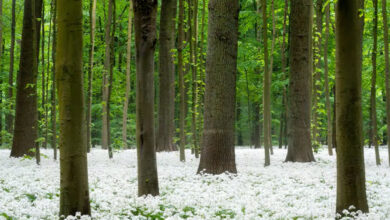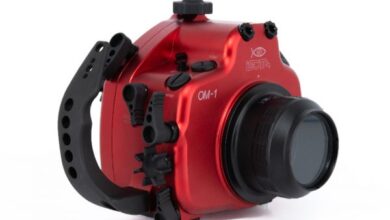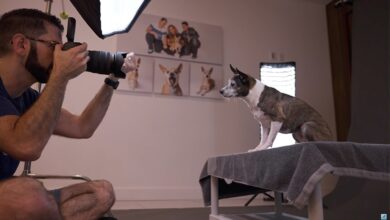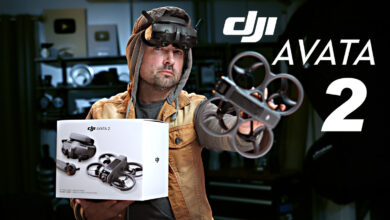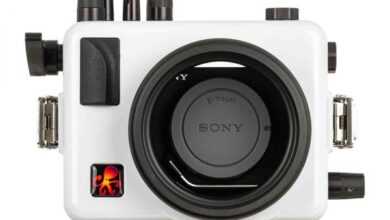My review of the Vintage Meyer-Optik Görlitz Trioplan 100mm f/2.8 lens

It’s one of the more popular classic lenses: the Meyer-Optik Görlitz Trioplan 100mm f/2.8. It is famous for its soap bubble effect. You either love this effect or you hate it. I decided to buy one and use it on the Canon EOS R5. I want to tell you about my findings.
Using vintage lenses on modern mirrorless cameras is nothing new. There is a huge fan base for the effects you can achieve using these lenses. A few lenses stand out and can be considered famous. First is the Helios 44 58mm f/2, famous for its swirly bokeh effect. The second is the Meyer-Optik Görlitz Trioplan 100mm f/2.8 with soap bubble effect.
The popularity of the latter leads to ridiculous prices, ranging from $300 to $500, or even higher, depending on its condition. Many people wonder if this lens is worth the price. I managed to get one for $250, which seemed reasonable. Luckily, it turned out to be in excellent condition. Definitely not mint, but very functional with clean, clear glass.
A bit of history
The Meyer-Optik company was founded in 1896 in Görlitz, Germany. Optics expert Hugo Meyer, together with Heinrich Schätze, was known as a lens manufacturer for the first 20 years. Starting in 1952, the famous Trioplan was produced. The last 2.8/100mm Trioplan was produced in 1964. After some investigation, I believe my 2.8/100mm Trioplan was produced sometime between 1954 and 1958.
When Meyer-Optik was merged into the VEB Pentacon company in 1971, the brand disappeared. However, in late 2018, OPC Europe acquired the rights to Meyer-Optik and its lens designs. Today, Meyer-Optik Görlitz has redesigned older lenses, including the Trioplan.
Things to consider when buying vintage lenses
Buying a vintage lens is risky, especially online, since you can’t see its condition. The lens body can become damaged, the rotating mechanism of the aperture ring and focus ring can become stuck, and there is a risk of mold and dirt getting between the internal lens elements. In the worst case, the lens moves out of position, making it impossible to focus accurately.
It’s also important to consider the lens mount. There are different types of mounts, such as M42 and M39. Some lenses made for rangefinder cameras have a different flange distance compared to DSLR and mirrorless cameras.
Most vintage lenses can be adapted to modern cameras. The M42 mount is easy to use on DSLR cameras; you only need one conversion ring because the flange distance is identical. If you are using a mirrorless camera, an adapter for DSLR lenses is needed to account for different flange distances.
Adapters are widely available, from cheap to expensive. I’m not saying you should buy the expensive ones, but be careful with the cheaper ones. Choose a metal one with a shiny metal mount and make sure there is no emission when connected to the camera.
Obviously, classic lenses will not have electrical contacts. Be sure to activate the shutter release option without the lens attached. Otherwise, it won’t work. The aperture will close, resulting in a darkened viewfinder when using the lens on a DSLR camera. When activating the mirrorless camera and simulating exposure, this will be fixed. However, you’ll be stuck with manual focus.
Using the Meyer-Optik Görlitz Trioplan 100mm f/2.8
Mount the Meyer-Optik Görlitz Trioplan 100mm f/2.8 on the lens Canon EOS R5 is simple. I have one M42 adapter fits Canon EF mount. Next, EF-EOS-RF the adapter makes it possible to attach the lens to the EOS R camera. As mentioned, the camera is set up to be able to shoot without the lens attached.
Using a mirrorless camera with the Trioplan 100mm f/2.8 has many benefits over using a DSLR. First, exposure simulation keeps the viewfinder bright, even when the aperture is reduced. Second, centralized support is a big help. Although the distance scale is no longer visible, focus peaking still works, although difficult to use with this lens at f/2.8.
The minimum focusing distance is 1.2 meters, which limits the ability to photograph flowers and insects. It is not a macro lens. That’s why I also bought a set of classic silver Edixa Reflex M42 extension tubes.
I tested the lens once with a flower and highlights in the background to get an idea of the soap bubble effect, but I used it extensively on some damselflies and a tree frog. . I used 6mm and 13.5mm extension rings, which resulted in less pronounced soap bubbles in my case. But I was able to get much closer and achieve greater magnification.
Using the Trioplan 100mm f/2.8 was fun and the effort required to get a sharp subject reminded me of when I used my first Practika camera. The Trioplan 100mm f/2.8 is also a great match for that lens. When using the lens on the EOS R5, I discovered that I was more focused on taking photos because I had to put in more effort to capture a photo.
My first impression
Using vintage lenses affects image quality. It is less sharp than modern lenses and has lens defects. At least for this lens, post-processing is necessary to make the colors more vibrant. The lens seemed prone to flare, although I didn’t notice this on my first try. Maybe if I remove the lens hood, flare will occur more easily.
The soap bubble effect is created by the 15-blade aperture. For tree frogs, circumstances are not perfect to see that typical soap bubble effect. The expanding rings also enlarge soap bubbles, reducing the visibility of the effect. The dragonflies were in a more suitable situation.
I have noticed some blooming effects of the highlights around the damselflies. This is due to the strong backlighting and is probably a characteristic of this lens. If the backlight is less, this effect will be less pronounced or not appear at all.
The first thing to note is the complex appearance of the background, which is characteristic of this lens and why many people don’t like the result. Although I haven’t seen the soap bubble effect yet—except in one photo of a flower in my garden—I’m curious to see how it plays out in the long run.
I plan to use this lens for flowers and some portraits. Perhaps there are other situations that are perfect for the soap bubble effect. I need to experiment more and get used to the lens and its results.
A cheaper alternative
It looks like the new Meyer-Optik Görlitz has released a modern version of the old Trioplan lens: Trioplan 100mm f/2.8 II. It features an improved optical design and lens coating, and the minimum focusing distance is reduced to 0.9 meters. This lens is available in almost any lens mount. Unfortunately, it is sold for no less than 999 euros.
If you are looking for a cheaper modern alternative, TTArtisan provides soap bubble lenses Similar to Trioplan’s design. You can choose the M mount or the old-style M42 mount. The best thing about it is the price. It’s on sale for just $155, which is a good price. Probably even better than an old classic.
However, these modern lenses will take away the special feeling of mounting a 70+ year old lens on a modern camera. It has a unique appeal that newer lenses may not offer. But it’s nice to have this option if you don’t want to spend too much on old vintage lenses but still want the typical soap bubble blur effect.
What do you think about using vintage lenses? Let me know in the comments below.
